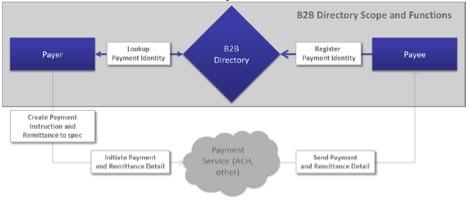10:30 AM
Federal Reserve 2014 Payments Symposium Highlights
When comparing the evolution of payments in the United States with ancient Egyptian history, one might conclude the Egyptians were further ahead in the development of their culture than the United States has been in advancing a modern payments system.
In early September, the Federal Reserve announced its decision to proceed with the development of a new payments vision. The exact timeline for the completion of the vision has yet to be determined, but observers anticipate it could take eight to 10 years to complete.
In contrast, the earliest known Egyptian pyramids were constructed between 2630 and 2611 BCE. Considering the tens of thousands of laborers required to manually complete the construction in just 19 years, a 10-year horizon for a new payments vision, using modern technology tools, should produce the eighth wonder of the world!
Modernizing a nation’s payment infrastructure
When considering the legacy payment technology banks, companies, and individuals in the United States currently use, the task of moving a nation’s payment infrastructure is not trivial.
The Fed appears to be moving along a very deliberate path toward modernizing the payments infrastructure. Lacking the mandate of regulation the European Union used to undertake the SEPA initiative, the Fed must work at a pace that accommodates a large stakeholder base. As one large money center bank executive related, the Fed’s vision will cost banks millions of investment dollars to implement with no clear business return, a point made repeatedly during the Fed’s 2014 Payments Symposium held in Chicago from Sept. 25 to 26.
The lack of a clear business case was not a deterrent to many of the presenters from Australia and Singapore who provided background for their implementation of faster payment initiatives. This was borne out in other comparative benchmarks by the Fed of other jurisdictions indicating consumer expectations and national sentiment overcame any reservations due to the lack of empirical business data. In fact, the overall tone of the symposium was remarkably positive about the Fed’s payment vision.
Demonstrating value at each step of the vision’s rollout will be essential, not only to maintain stakeholder involvement in the United States, but also to motivate them to embrace the changes.
The B2B Directory: a database of payees
Let’s revisit the Fed's vision, which is driven by four main objectives:
- Ubiquitous, faster electronic options
- Greater electrification of payments
- Better choices for businesses and consumers
- Stronger security
Unfortunately, the first objective has stolen the headlines at the detriment of some of the other foundational elements that address the overall business case. For example, when the question of faster payments was discussed at the NACHA conference in April, corporate panelists focused on speed versus other enabling aspects that would accelerate the movement to electronic payments.
During the Symposium, greater definition of the enabling element for creating buy-in was more fully explained. The Fed announced the development of a payee directory.
The Business-to-Business (B2B) Directory is envisioned as a database of payees. It will allow payers to find the information needed to make payments to their payees electronically. The B2B Directory will serve as a utility. It will store, manage and look-up the electronic information (i.e., “the identity”) of a payee, including account and payment information. The main goal of the B2B Directory is to help U.S. corporations increase their use of domestic electronic payments and related business information to their business payees.
The move to electronic payments still a challenge
In the AFP 2013 Payments Survey, the difficulty of switching from paper to electronic payments was highlighted as the major impediment to faster electronic payment usage. The Fed hopes to address three major challenges in the movement from paper:
-
Difficulty of accessing electronic payments products: small, medium and middle market companies do not have easy access to Automated Clearinghouse (ACH) payments.
-
Inability of electronic payment solutions to effectively convey associated remittance information from payer to payee in a simple, ubiquitous, automated manner.
-
Inability for payers to find easily, manage and use the electronic payment identity of their payees and vendors.
The last point is the most important: The directory provides the missing data required of payees to make electronic payments. This is the modern-day payments Rosetta Stone.
In combination with the work the Receivables Coalition has made to promote the new ISO 20022 remittance standard and the advent of a payee directory, the Fed will facilitate the movement to electronic payments through the existing ACH networks long before the new infrastructure for faster payments is completed. In the short-term, the major inhibitor for a company moving to electronic payments has been removed. The infrastructure for faster payments becomes the infrastructure to support a larger volume of electronic payments. In this manner, the Fed has moved from a “build it and they will come” mindset to an infrastructure born out of necessity.
During the Payments Symposium, the Fed outlined the next steps to build a proof-of-concept of the directory in early 2015 and draft a proposal for a Directory Association body that will govern the directory.
Compared to last year, where the reaction to the Fed’s vision was met with great skepticism, the tone of the Symposium ended far more positively. In the closing remarks, one executive summed up the turn in sentiment for faster payments as “an inevitable initiative.”
At next year’s Payments Symposium, it will be interesting to assess the progress of the Fed and the tone of stakeholders. In the interim, will the Remittance Coalition’s directory proof-of-concept garner the type of industry participation necessary for it to accelerate the movement to faster payments? To learn more about the Remittance Coalition and the directory proof-of-concept, visit the Fed’s Payments Improvement website.
Lawrence F. Buettner is a senior vice president at Wausau Financial Systems, which provides receivables technology for financial institutions. He has 30 years of experience in financial treasury management and was a senior vice president at First Chicago. View Full Bio


























